Added 1 new A* page:"When I read A*, I feel like I'm inside the hole itself. The art complements the setting, especially since black and white switch roles as light and shadow. Although the story progresses panel by panel, I am strangely attracted to the universe of A*."
— bunny pandemic, Bunny Pandemic |
This Space.com article informed me that there's a new telescope on the scene: ESO's VLT Survey Telescope ("VST"), in the high Chilean desert right next to the VLT ("Very Large Telescope") that I mentioned and showed a picture of just recently.
The VST's light-gathering mirror isn't all that big by big telescope standards—just 2.65 meters across, vs for instance the four 8.2 meter mirrors of the VLT (or the 100 meter mirror of the ESO's proposed Overwhelmingly Large Telescope, which was however cancelled in favor of the less overwhelmingly expensive 42 meter European Extremely Large Telescope, scheduled for completion in 2018 (no, I am not making these names up! :P)), but it has a wide aperture and a powerful camera (the "OmegaCAM," dun-dun-dunnnn), perfect for sweeping the sky and taking large-scale photographic surveys of space—and of the galactic band of the Milky Way in particular, including A*. :)
So that's neat. Here's an informative video about the VST, with pleasant background music:
[Removed the embedded Flash video; was a space.com source but now just redirects to their YouTube channel. : Pp]
But enough talk, let's see what it can do!
To show it off, the ESO released two pictures, each of an object so large in the sky that it can't be captured in a single image by other large telescopes, such as Hubble, even though Hubble's view is far sharper. Let's compare!
Here's the VST's view of the Omega Nebula, aka the "Swan Nebula," or Messier 17 ("M17"), a cloud of hot, star-forming gas somewhere between 5,000 and 6,000 light years from Earth (isn't it interesting that they haven't really been able to nail down its precise distance yet?), in the direction of the galactic core. The nebula is 15 light years across, an estimated 800 solar masses, and sits in a cloud of material that's about 40 light years in diameter.
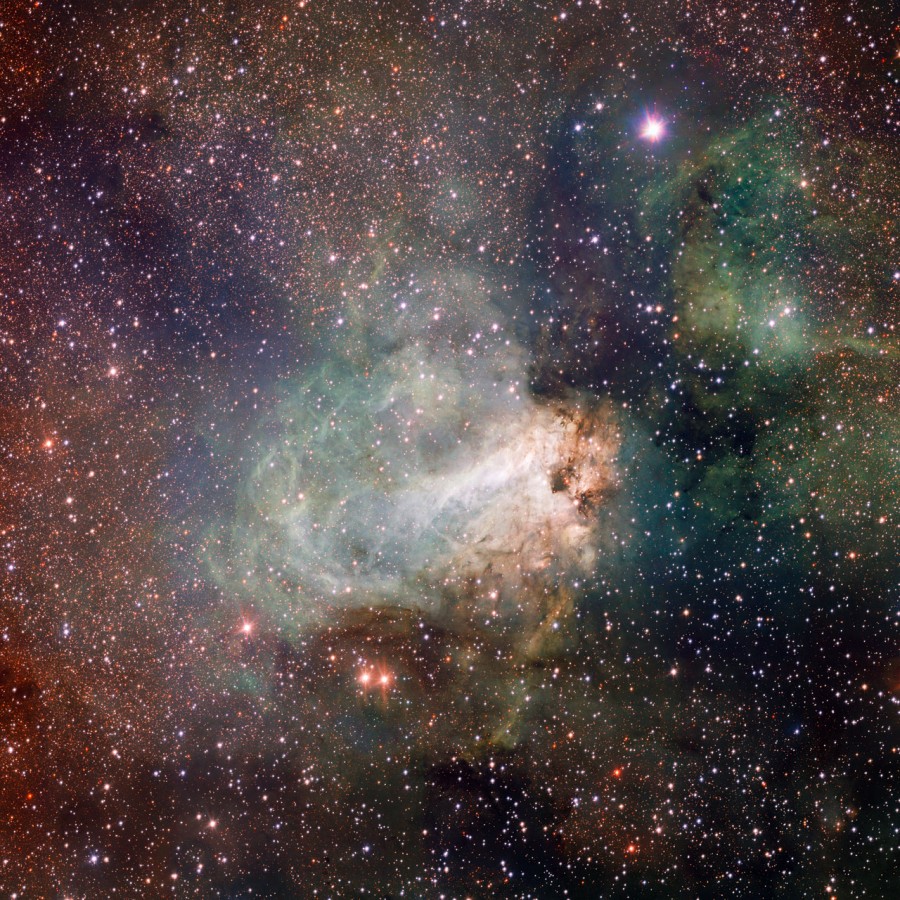
image by ESO/INAF-VST/OmegaCAM (source)
And here's Hubble's view of the same nebula:
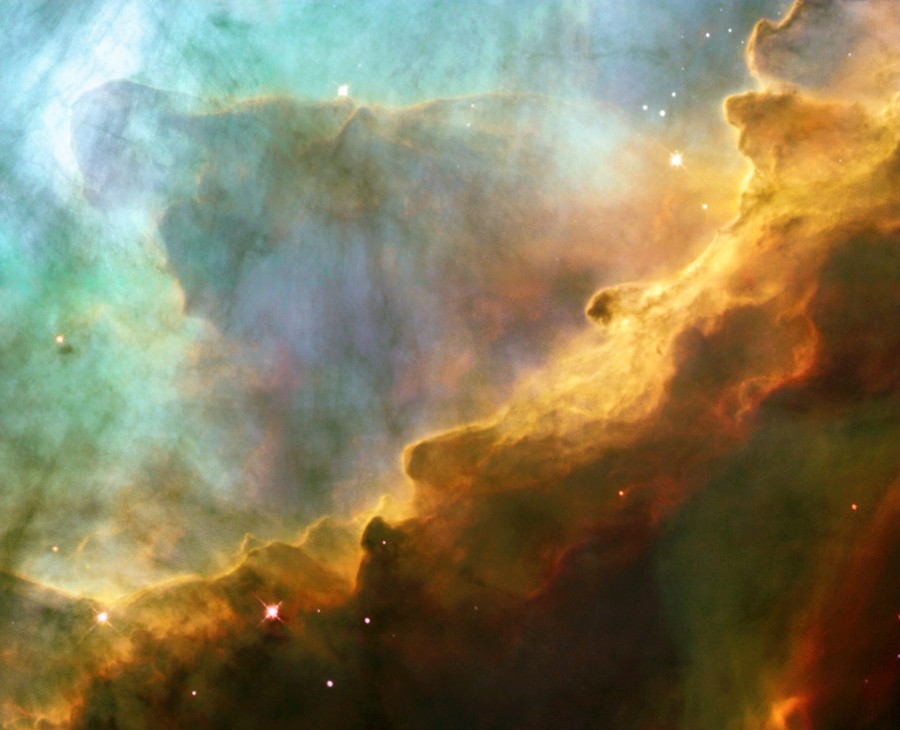
image by NASA (source)
So, the VST is good for seeing it all in one go! The second released VST image is of the globular cluster Omega Centauri, the largest and brightest star cluster in the Milky Way, and the second largest star cluster in our local group of galaxies; it was so bright that Ptolemy was able to spot it, over 2000 years ago—he thought it was a star. Omega Centauri, 15,800 light years from Earth, is about 12 billion years old, and contains several million stars (5 million solar masses), the ones in the center averaging less than 0.1 light years apart.
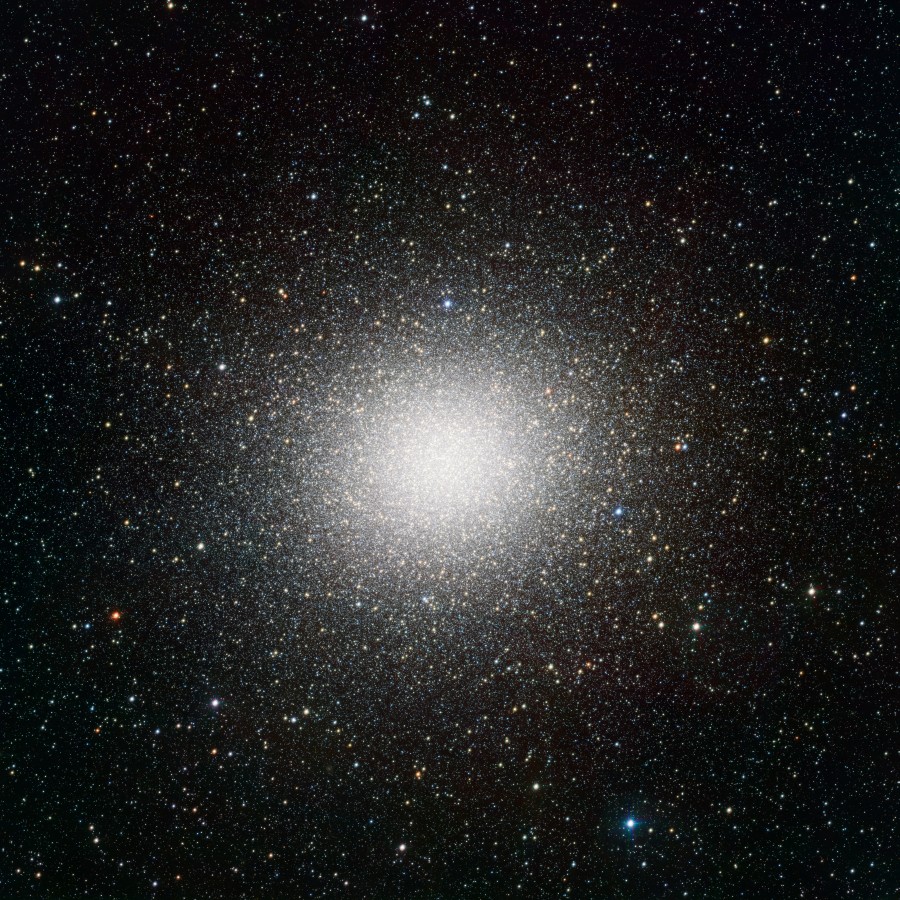
image by ESO/INAF-VST/OmegaCAM (source)
And Hubble's view:
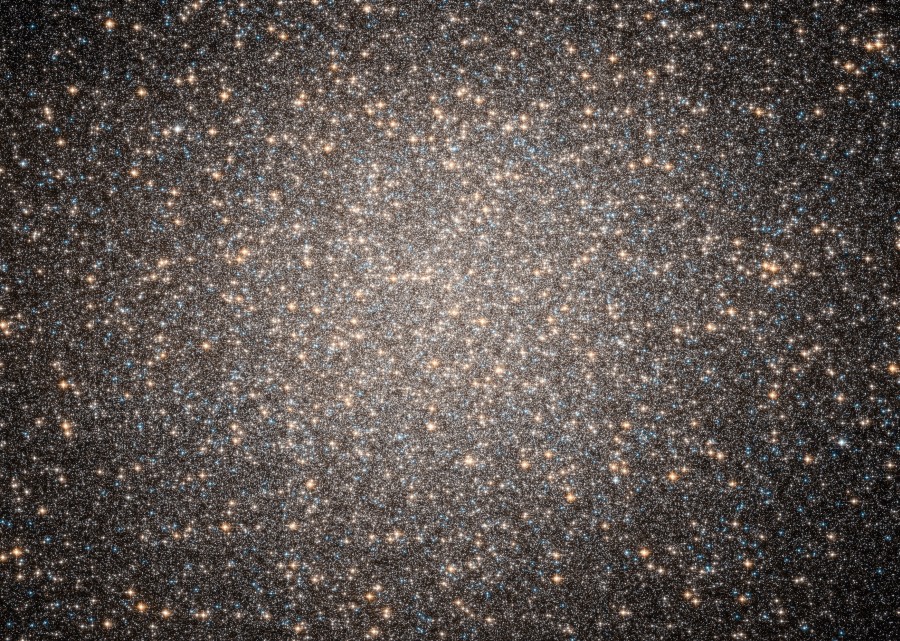
image by NASA (source)
~~~~~~~~
Interestingly, when I first posted about Omega Centauri over here on the A* forum (warning: high bandwidth, although there's a maybe even better photo of the cluster there, taken by telescope at a different ESO observatory in Chile), it was thought that there might be an intermediate-mass black hole of about 4000 solar masses at the center—this was based on readings that seemed to indicate the stars at the center of the cluster were moving faster than those farther out. Subsequent observation, however, has found that star density and speed do not vary significantly at the center, and if there is a black hole there, it must be a much smaller one, maybe no more than 1,200 solar masses. NASA and the ESA even put together a graphic showing the calculated star movements at the core of the cluster; the photo is from October 2010 with Hubble's new Wide Field Camera 3, and the motions were calculated by comparing the positions of the same stars as seen in Hubble photos of the cluster from 2002 and 2006; each streak shows the star's predicted motion over the next 600 years, composed of dots 30 years apart:
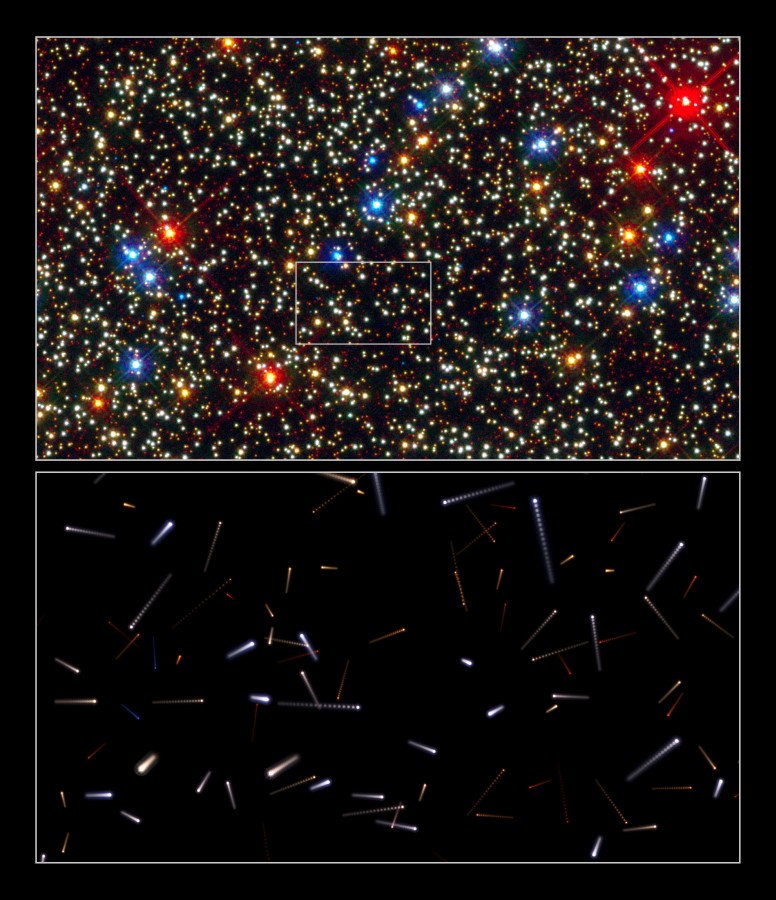
image by NASA, ESA, J. Anderson and R. van der Marel (STScI) (source)
So as you can see, it seems that the stars are moving in random directions, rather than in tight orbits around a central mass; contrast that with the observed motions of stars at the center of our galaxy, around A*, where the stars at the very center are packed as close as light-days apart, and are moving very quickly in tight orbits around a central object: the theorized supermassive black hole A*!
(The ESO, or European Southern Observatory—the organization of fourteen European nations, and Brazil, that runs these vast observatories in Chile and other southern hemisphere locations—should not be confused with the ESA, or European Space Agency, comprised of many of the same nations, but focused on spaceflight rather than ground-based telescopic observation. I'm mentioning this only because I had them a little confused in my head. :P)
|
